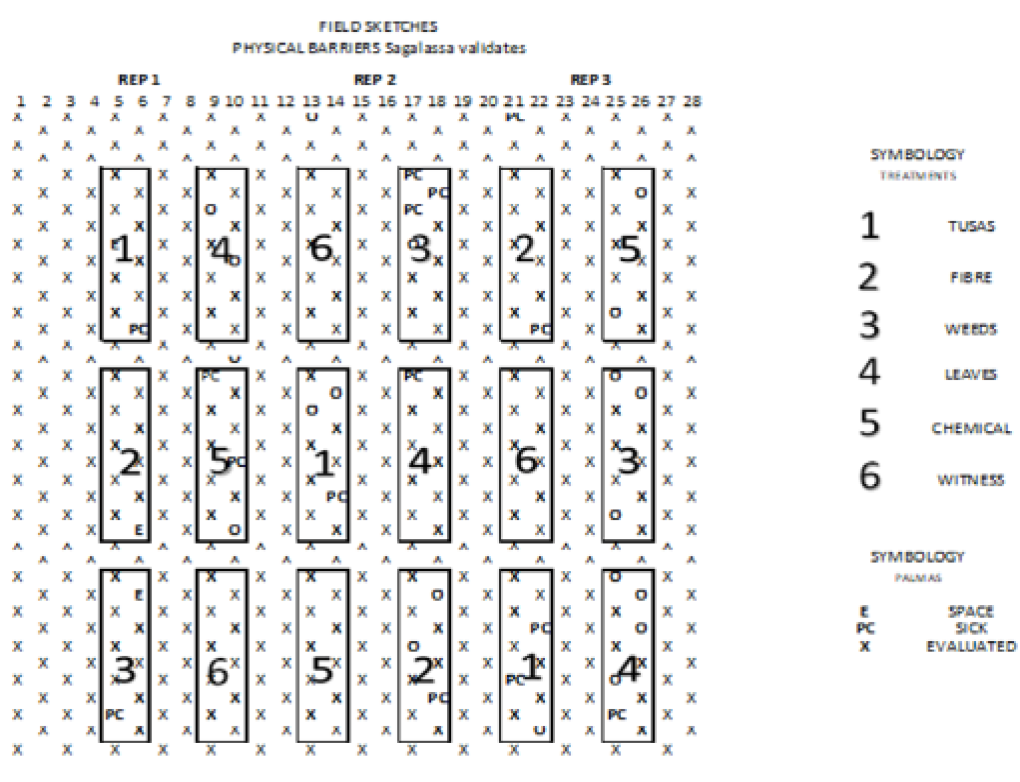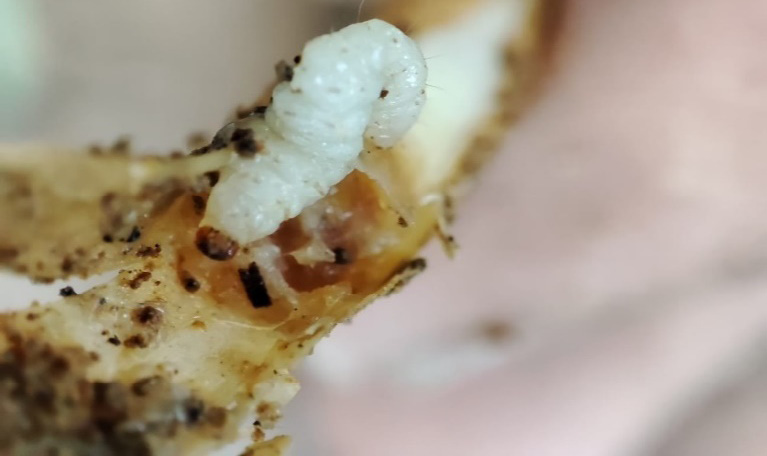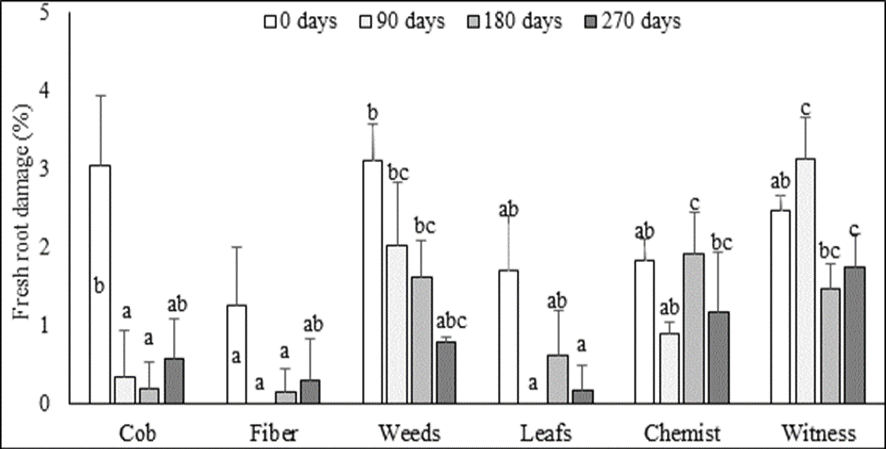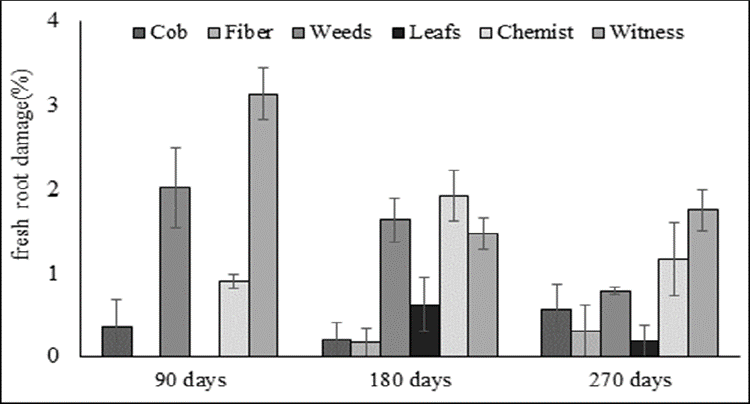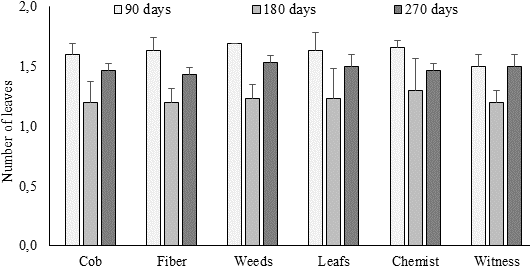Physical Barriers in the Control of Sagalassa valida in Interspecific Oil Palm Hybrids
Physical Barriers in the Control of Sagalassa valida in Interspecific Oil Palm Hybrids
Cristian Mendoza1*, Adriana Celi-Soto2, Ernesto Cañarte3 and George Cedeño-García2
Map of the experiments.
Root survey for the evaluation of S. valida (a) preparation of the survey; (b) functional roots; (c) new roots (white color); (d) fresh damage (reddish dejections) of S. valida; (e) new roots (white color); and (f) new roots (reddish dejections).
Larva of S. valida and its damage to a primary root of the oil palm.
Number of S. valida larvae per plant according to the treatments under study in the four evaluations carried out in an oil palm plantation in esmeraldas, ecuador.
Percentage of fresh damage caused by S. valida in the roots of oil plants according to the treatments under study in the four evaluations carried out in an oil palm plantation in Esmeraldas, Ecuador.
Evolution of the decomposition of the mulches used in the treatments in the study carried out in an oil palm plantation in Esmeraldas, Ecuador. (a) fresh fruitless bunches; (b) fruitless bunches after 90 days; (c) fresh fiber; (d) fiber after 90 days; (e) fresh weeds; (f) weeds after 90 days; (g) fresh leaves; (h) leaves after 90 days.
Percentage of fresh damage caused by S. valida in the roots of oil palm plant according to the treatments under study in the three evaluations carried out in an oil palm plantation in Esmeraldas, Ecuador.
Leaf emission of oil palm plants according to the treatments under study in the three evaluations carried out in an oil palm plantation in Esmeraldas, Ecuador.
Rainfall during the experiment in an oil palm plantation in Esmeraldas, Ecuador. The dashed line indicates the water deficit for the crop.





